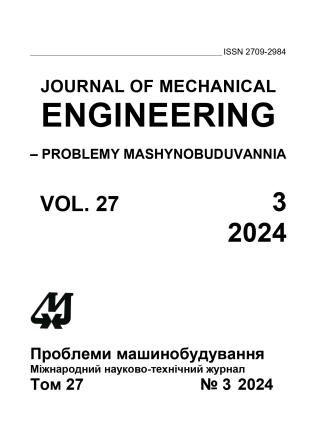CFD Simulation of the Influence of the Type of Gas Distribution in the Burners on Thermal Aerodynamic Processes in the DKVR 10-13 Boiler
Abstract
Topics related to fuel combustion and its impact on the environment will never lose their relevance, as the issues of efficient combustion and emission reduction are key in power generation and environmental protection. The countries of the European Union are massively abandoning the use of natural gas as a fuel for thermal power stations. However, in Asian countries, the ease of using natural gas as the main fuel and its environmental friendliness compared to coal made it possible to widely use natural gas in industry and energy sector. Comparing natural gas with alternative combustible gases (generator, blast furnace, mine, biogas), the main conclusion that it has the most attractive characteristics for its use in industry, including energy facilities, can be drawn. Therefore, it is impossible to replace it with alternative fuels in the chemical, heavy industry and energy sector in the near future. The paper is devoted to CFD modeling of stabilized combustion without premixing in a burner with low swirl for two operating modes of the boiler unit - nominal one and at 60% capacity. The study was carried out using numerical methods with the ANSYS-Fluent application program package. The object of the study is a burner built according to the technology based on the use of jet-niche systems with gas distribution of fuel by circular jets fed perpendicularly into the flow of the oxidizer through a single-row system of holes. Hydrodynamics and heat exchange processes were chosen as the subject of research, based on the analysis of which a model of NOx generation in jet-niche systems was obtained. The authors of the paper believe that replacing the regular burners of the DKVR-10-13 water heating boiler with a jet-niche ones can contribute to better mixing of fuel and air and ensure more complete combustion. In this paper, two types of burners are considered. In one of the burners, fuel is supplied through rectangular slits, in the other – through round holes arranged in a row. Air is supplied to both burners through rectangular slits. It was determined that gas distribution through round holes increases the spraying of the mixture and increases the area of combustion products spraying. Visualization of the distribution of pressure, temperature, kinetic energy profiles of turbulent pulsations and vorticity was carried out. The obtained results indicate that there are no changes in the flow regime, flame displacement or its instability. It was determined that both the axial velocity and the tangential velocity of the flow affect the distribution of combustion products and harmful impurities such as NOx. Gas distribution in circular jets stabilizes combustion and reduces flame expansion.
Downloads
Published
Issue
Section
License
Copyright (c) 2024 О. Ю. Черноусенко, А. Ю. Рачинський, О. В. Баранюк, О. А. Сірий

This work is licensed under a Creative Commons Attribution-NoDerivatives 4.0 International License.
All authors agree with the following conditions:
- The authors reserve the right to claim authorship of their work and transfer to the journal the right of first publication of the work under the license agreement (the agreement).
- Authors have a right to conclude independently additional agreement on non-exclusive spreading the work in the form in which it was published by the jpurnal (for example, to place the work in institution repository or to publish as a part of a monograph), providing a link to the first publication of the work in this journal.
- Journal policy allows authors to place the manuscript in the Internet (for example, in the institution repository or on a personal web sites) both before its submission to the editorial board and during its editorial processing, as this ensures the productive scientific discussion and impact positively on the efficiency and dynamics of citation of published work (see The Effect of Open Access).

